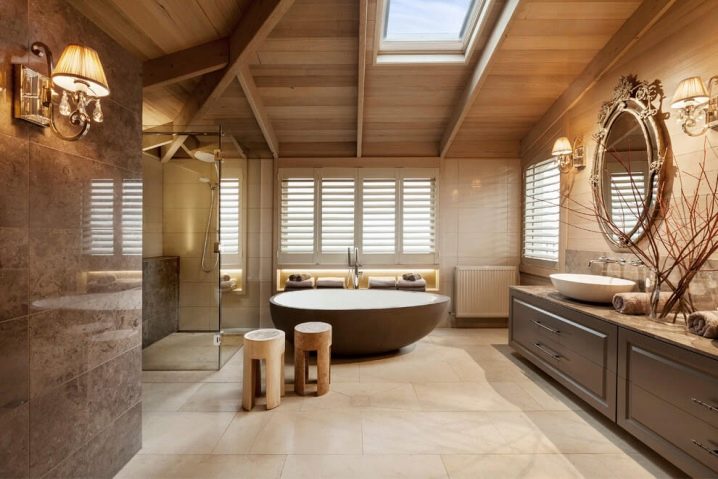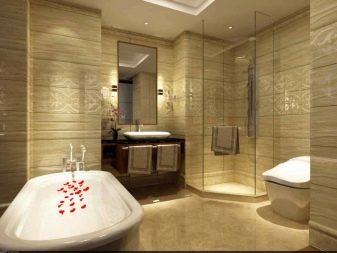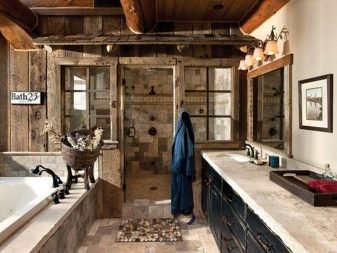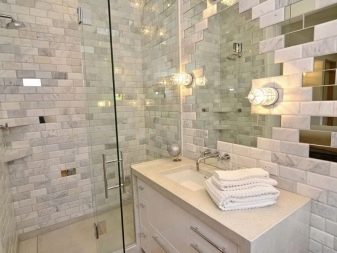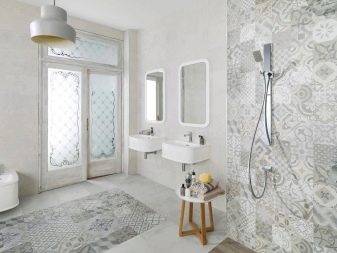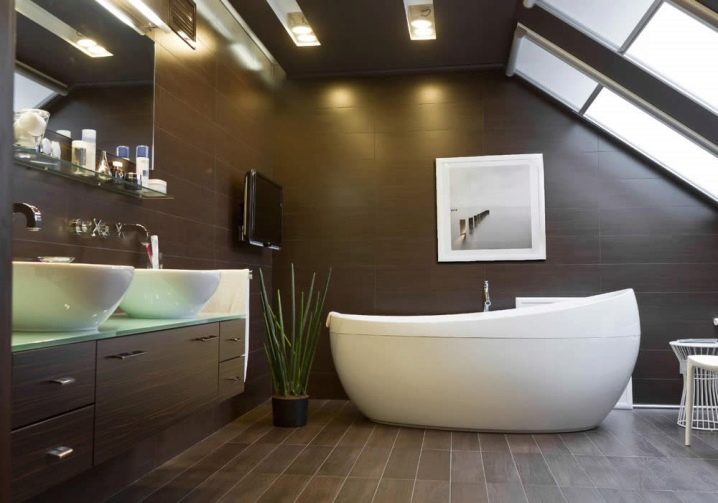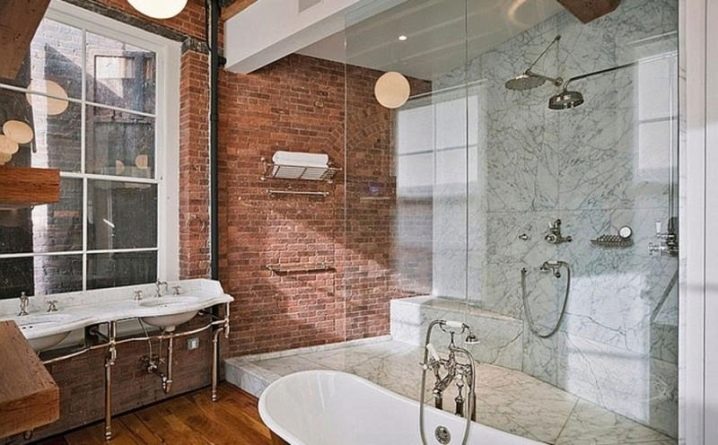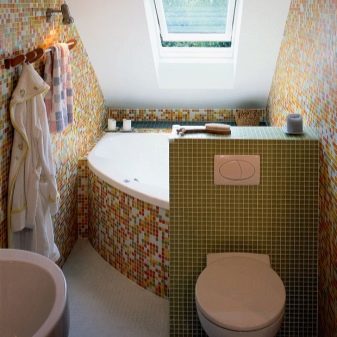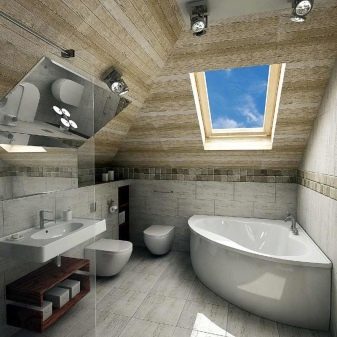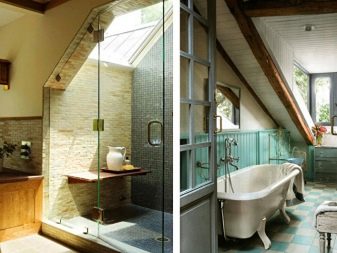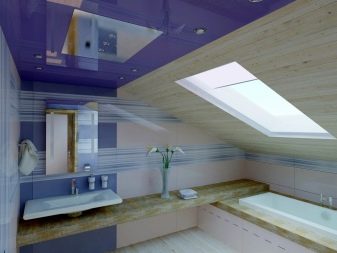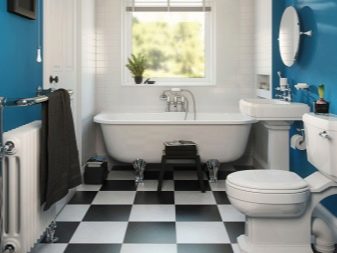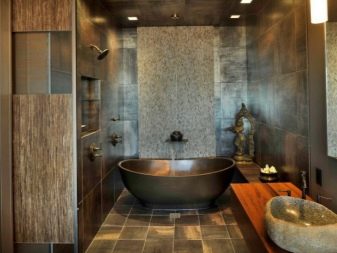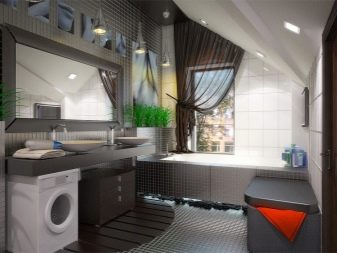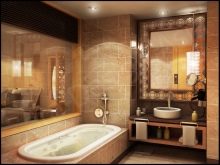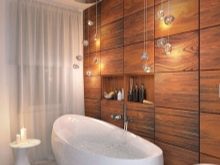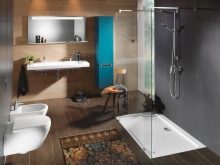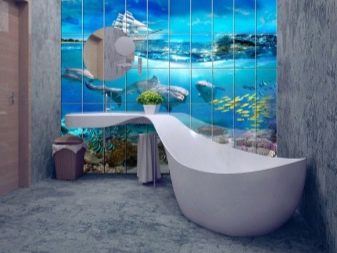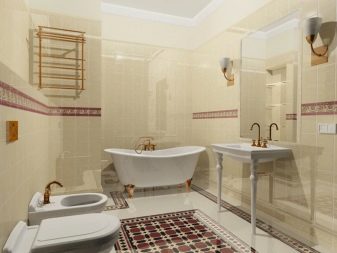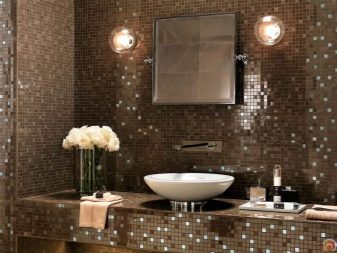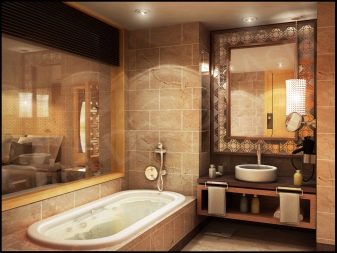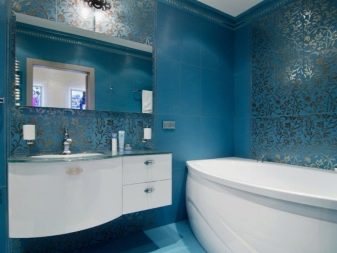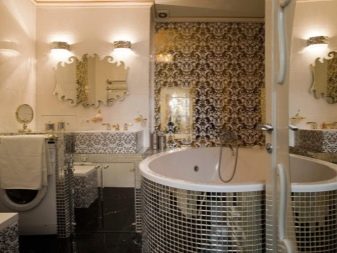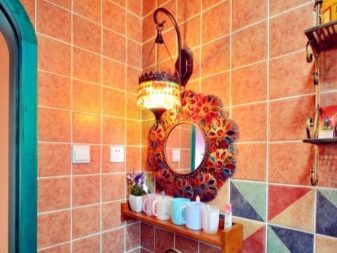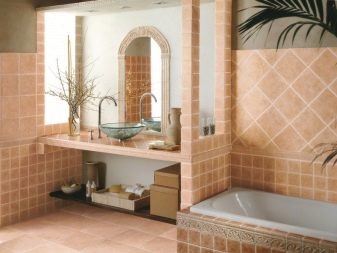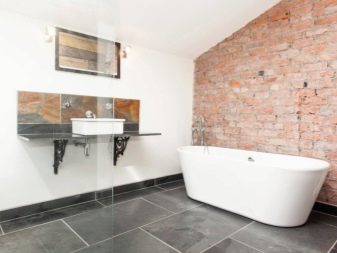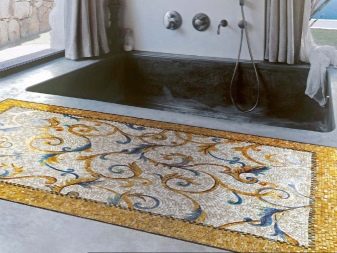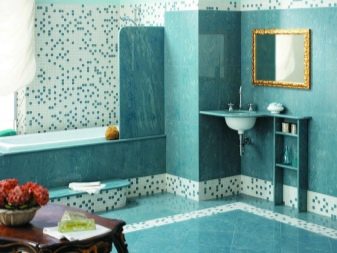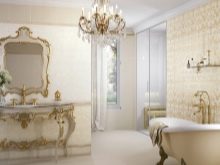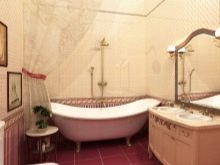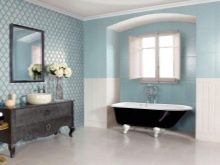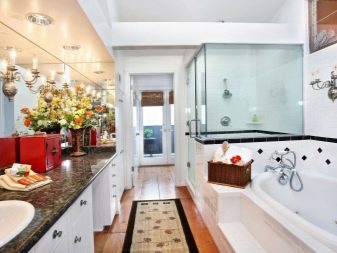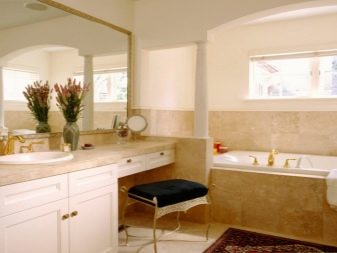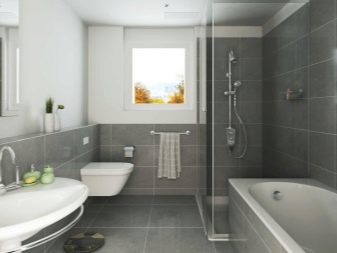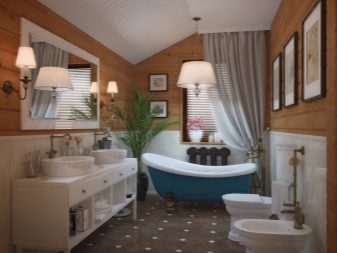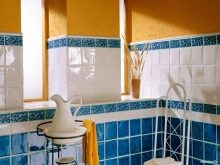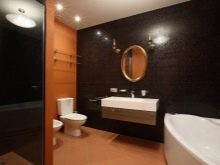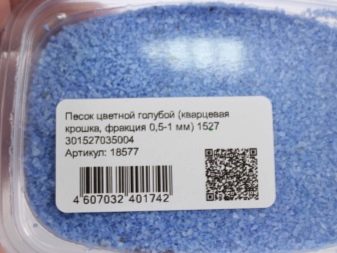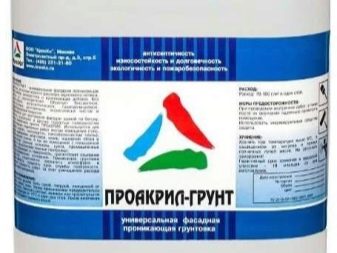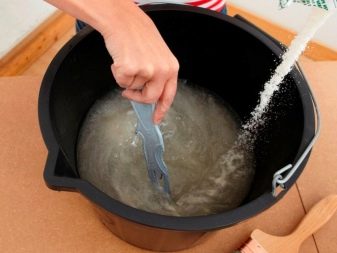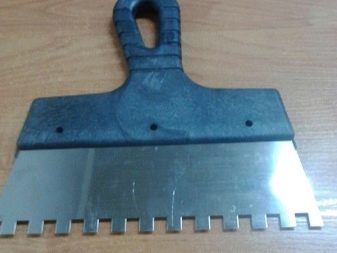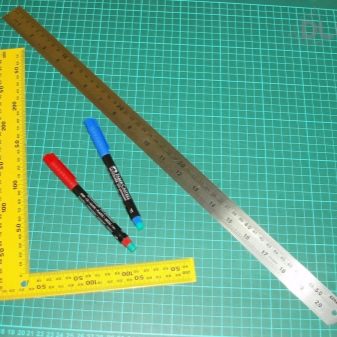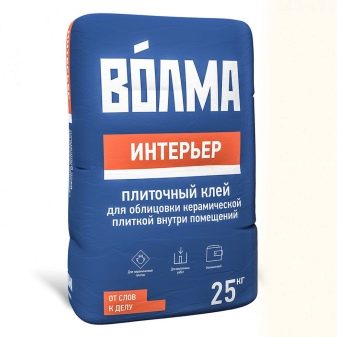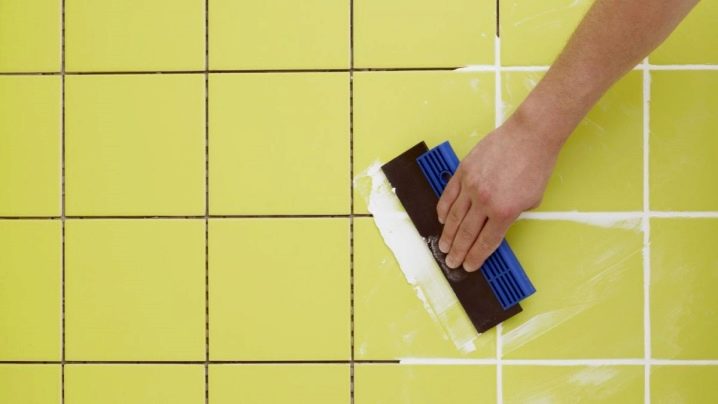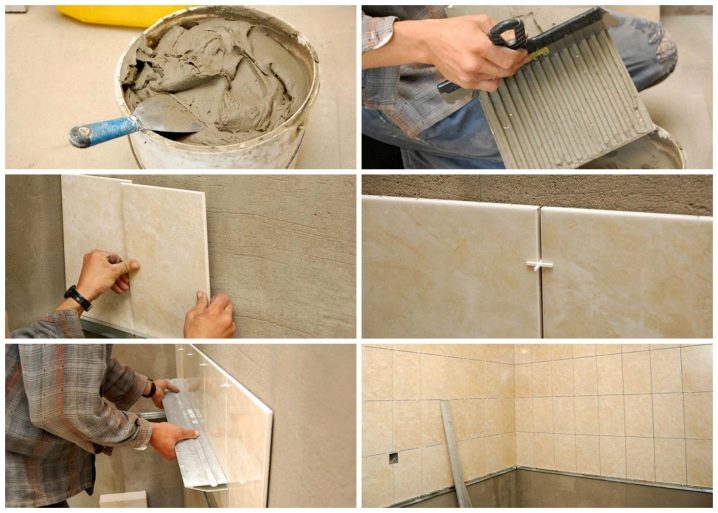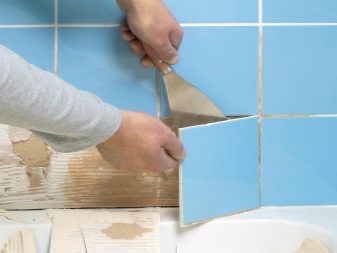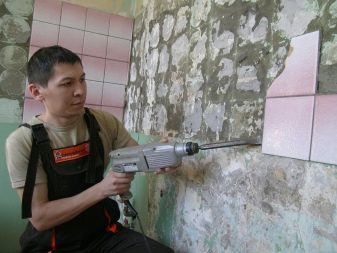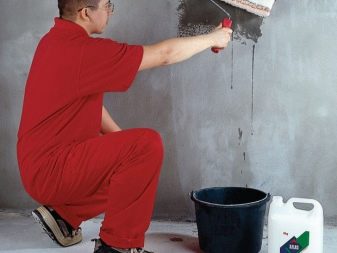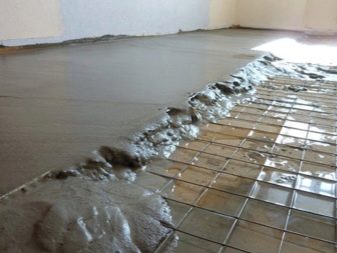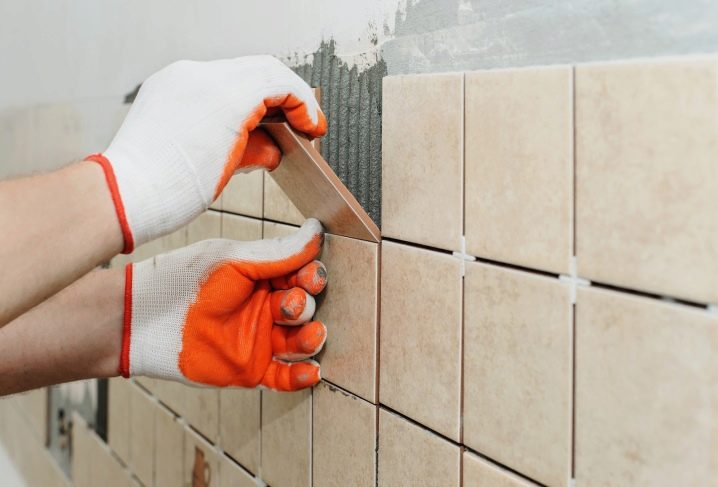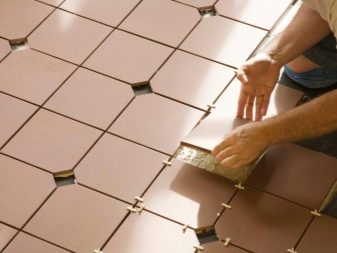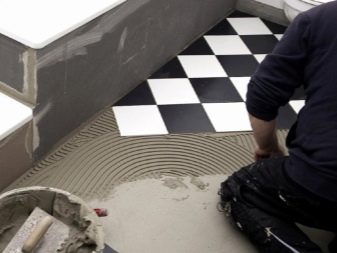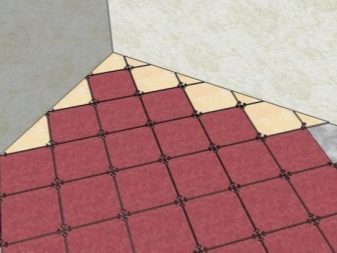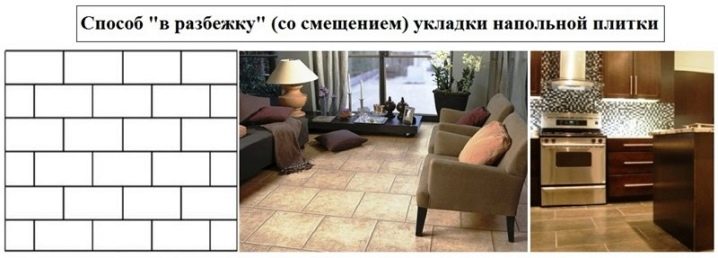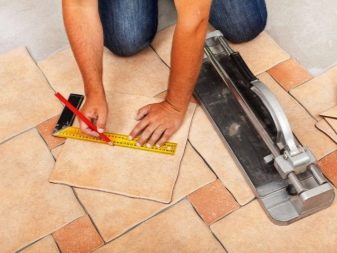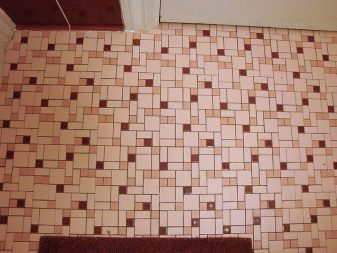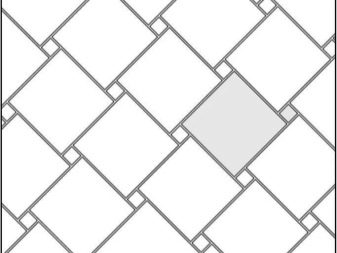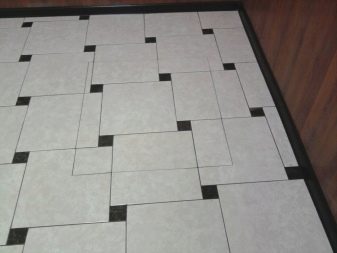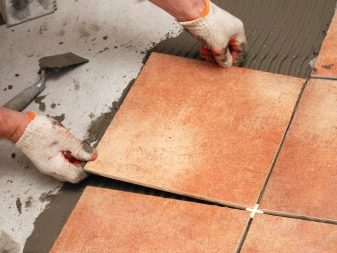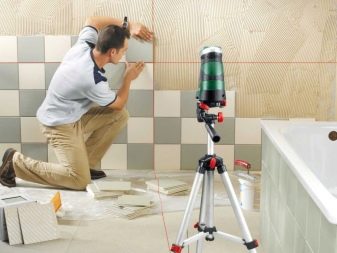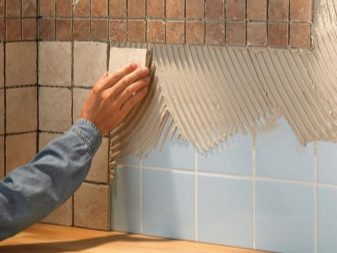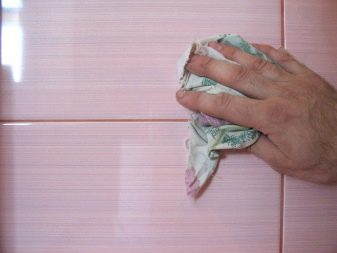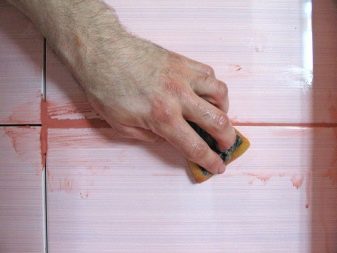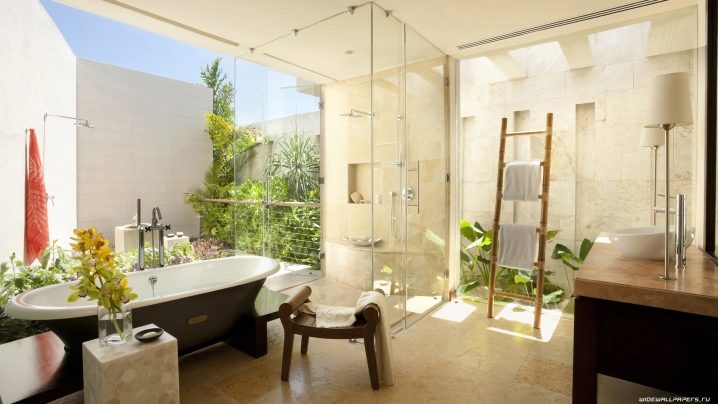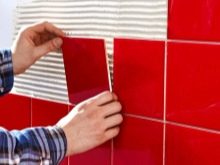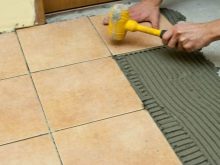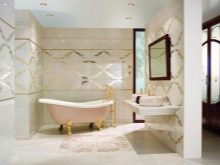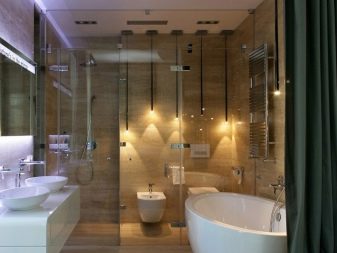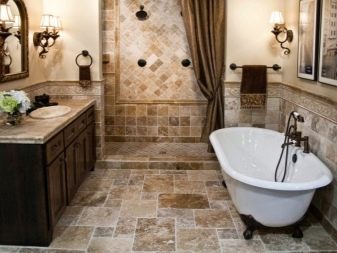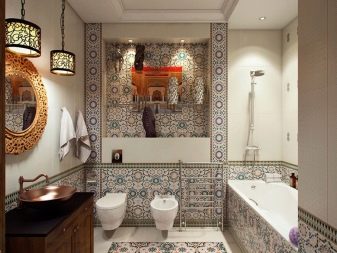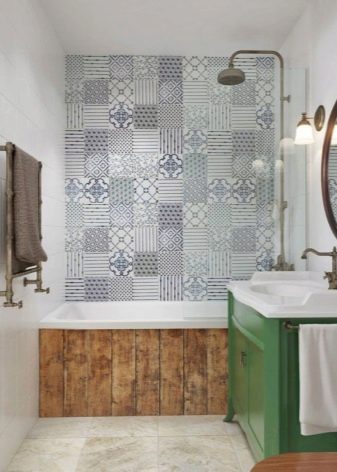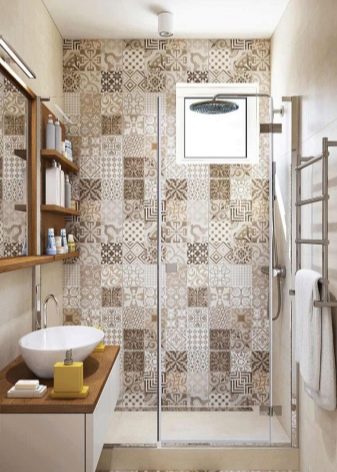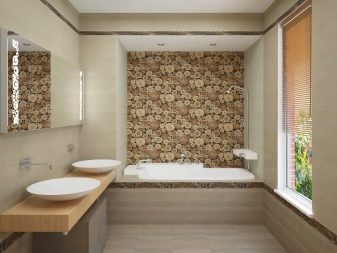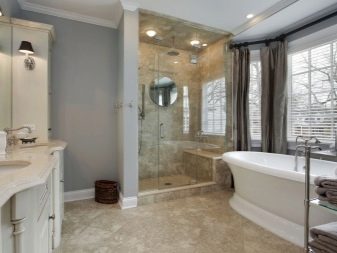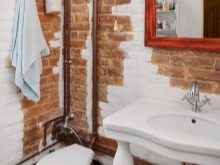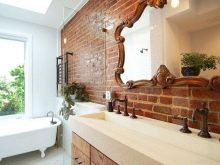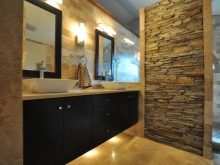Laying tiles in the bathroom: design ideas
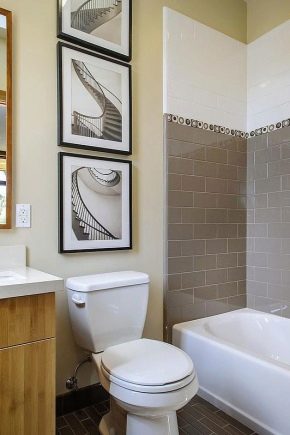
In the arrangement of the bathroom is of particular importance facing the walls and floor. Choosing a tile, I want it to be a decoration of the bathroom and carry the functional load. A look at examples of design impresses with the capabilities of tiled fragments.
Special features
It seems to an unenlightened inhabitant that laying tiles in a bathroom is only possible for an experienced craftsman. His work, as a rule, does not have a drop in height, defects in the difference in seams in width, fixing the tile with the legs. However, in the field of decoration there are cases when unfortunate craftsmen perform finishing on a low level.Since any defect on the surface is noticeable, you can perform the installation yourself, because the owner of the house is always interested in quality results. This does not require a global study of glue and tile formulations.
It is enough to know detailed instructions, highlights and tricks, through which the masters of their craft facing looks impeccable.
Of great importance are the geometry of the dies and devices to ensure the identity of the seams. If you initially do not calibrate the fragments, it is difficult to expect an ideal result. Bathroom is a place with a high level of humidity. Here the walls, the ceiling and the floor are exposed to steam, as well as splashes and water. Tightness is important: the tile must be a reliable barrier to the ingress of moisture to the enclosing structures. Therefore, along with it, you need to choose a high-quality adhesive base with a high proportion of adhesion. This will have to take care of the preliminary preparation of the base.
Not always the perspective of the bathroom is straightforward. This complicates the execution of the installation, makes you buy more dice, think over their layout more carefully.The problem with laying for the inhabitant can be built-in lights and drilling holes in the tile under the sockets. In some cases, the inept handling of the tool creates a defect on the tile, which forces you to buy material with a margin. The same applies to openings for ventilation of bathrooms or separate showers.
Of great importance is the location of the bathroom. For example, if a part of the attic space is set aside for it, we must take into account the weight possibilities of the supporting walls. If they allow, cladding can be done on walls and floors. If not, you will have to leave a small part of the ceiling under the tile, covering other surfaces with lighter materials. Sometimes tiles in such cases are used only for the bath and wash zone.
At the same time, they think over the ventilation system so that the wet steam leaves the room immediately.
The nuances of choice
Tiled material for the bathroom can be divided into three types such as:
- floor;
- wall;
- ceiling
Each type has its own characteristics and performance characteristics. It is not allowed to replace wall and ceiling materials with floor cladding. The size of the items may be the same.However, tiles of different categories differ in thickness and weight. The weight of glue and floor tiles together will create a tremendous burden on wall and ceiling ceilings. Wall varieties are much lighter and thinner.
In addition, the texture is different. Based on the safety requirements, for the floor it is preferable to choose options with anti-slip. These are more often slabs with a matte surface and protection against abrasion, having some roughness. They are especially needed in the case of facing steps leading to the bath. Wall cladding can be matte or glossy, smooth or embossed.
Not every material is worth buying. It is not chosen only on the basis of external indicators. The size of the bathroom matters. This factor determines the area of finish, the size of the dice, the size of the seams, their composition and location. Today it is not customary to make a version of the Rubik's Cube from the bathroom: the interior should not be completely decorated with tiles alone.
It is important that the lining stand out and at the same time be functional.
For this reason, initially inspect the bathroom room, determine the place for pasting, outline the accent, so that the coating looks impressive and modern. This is possible when combining cladding with a different finish.They try to use the tile in more wet places: the bath, washing and shower zones. Wall ceilings near the location of the furniture are sometimes sheathed or pasted over with other material. This allows you to maintain a balance in the background design of the bathroom and to receive the bathroom zoning into separate functional areas.
When choosing a serial tile in the form of companions of different sizes, the situation is aggravated by the selection of the right amount of each size. This forces a pre-layout. You can ask to calculate the material of the seller. Usually there are special calculator programs for dealing with such issues in specialized stores. Knowing the approximate area of coverage, they will perform the layout, which will allow the buyer to determine the amount of facing material. If the installation is complicated, you can contact the designer.
He will draw a rough sketch with all the sizes of the series and the method of laying.
Style and design
The times when the tile was a strictly functional element of the bathroom are a thing of the past. Previously, the interior of the bathroom did not differ much beauty. Today, in addition to protecting floors from water and destruction, tiles must be aesthetically appealing. It is important that she points to belonging to the chosen style.Ideas of modern design are different.
If desired, with its help, you can hint at the sense of taste of the owners of the house, their well-being and status in society. To do this, use the color, texture and theme of the picture.
Fashionable way to mitigate the diversity is to finish most of the floors with a single-color material. In this case, the raw materials can be very diverse. In the priority tile, glass, porcelain.
Ceramic tile for walls and floors remains the traditional material. However, today its design is fundamentally different from the decor of the Soviet era. Current trends are based on the imitation of different textures. In the fashion tile with a realistic design for wood, natural or artificial stone, brick and even concrete, mosaic glass with varying degrees of transparency, including a mirror version. If earlier people used to bet on marble, today variants with design for boards, parquet, malachite, pebbles, cork, laminate and even textured plaster are popular.
The coating may have a different degree of reflectivity. This allows you to choose between matte, glossy, pearl or mirror type material.Due to this, you can beat the lack of usable space, visually increasing the height and width of the walls. Popular with 3 D effect. They allow you to change the perception of space, but are appropriate only with sufficient space of a particular room. They look stylish and unusual, harmonious as a small accent to highlight one zone of the bathroom.
Usually these are small panels or wall cladding behind the bathroom, and as separate inserts on a general background, such dies are not suitable.
Mosaic is appropriate to emphasize the shower, underscoring the bath screen constructive protrusion. Fully make out her wall or floor can not. Today, brands offer to the attention of buyers options on the grid. This eliminates the need for tedious alignment of the seams between the elements. However, it does not eliminate the need for pre-layout on the floor before lining.
Today, it is not customary to combine tiles with separate inserts in the form of a pattern laid in a checkerboard pattern. When you need to perform an interesting accent, use the reception panel. This is a single image of several or many tiles that can be the same or different sizes. In addition, the direction of the tiles, creating a pattern may be different.This design looks stylish, expensive, it is always appropriate when facing.
The choice of style
Today, bathrooms can be designed in any direction of design. His choice depends on the general concept of the style of the whole house or apartment; footage is of great importance: limited room with a barely squeezed bathroom and sink is not suitable for design in the spirit of palace solemnity.
Tile for classic design trends (classics, neoclassics, classicism) should be bright. This is a predominantly smooth surface, dies in warm colors of the color palette. The basis of the finish is a coating without a pattern, sometimes with mother of pearl, the accent may be muted tones, gilding. For the expressiveness of one zone, you can use identical tiles for the floor and walls.
For example, the shower space with glass curtains will look beautiful, the ceiling, walls and floor of which will be made of tiles of the same design.
For directions boho, country, you can look at the tile patchwork. The convenience of this material is the possibility of gluing in a chaotic manner. In this case, the direction of the pattern, consisting of modules of different color, may be different. Such dies contribute to the style of a certain color and originality.They are extraordinary, however, due to the diversity of their number should be dosed.
Fashionable and creative areas are interiors in the style of industrial facilities. These include grunge and loft. In such bathrooms, special attention is paid to the realism of the texture and its shape. Tile is better to choose a rectangular shape for walls with a matte surface and a realistic shade under the brick. It is good if the stores manage to find wall coverings under concrete. In these areas, the focus is not on the drawing, but on the uniqueness of the texture and its authenticity due to color, shape and relief.
Floor tiles can be very diverse and also subject to the chosen style.
If this is a classic solution, you can finish the imitation carpet. Reception will allow you to make a beautiful and practical design of the bathroom, choosing for the zone of greater permeability trim with divorces in marble, stone or other material in darker colors.
Sometimes in the design of the floor you can see a combination of mosaic, borders and large plates. No less interesting design solution is laying tiles under the floor or board.This gives a lot of opportunities to choose extraordinary styling using dies of various sizes and shapes. Options under the board are appropriate in the style of the Alpine chalet and Provence. Parquet looks good on the floor of a classic bathroom, although in modern interiors it can be entered organically.
Fashionable interior of the bathroom with a tile are the following:
- classic;
- Art Deco;
- modern;
- loft;
- chalet;
- Provence;
- baroque;
- rococo;
- brutalism;
- bionics.
The tile is selected taking into account the temperament of all households. It should please everyone and be safe to use. Particular attention is paid to the protective layer that protects the material from abrasion. Usually, the design is thought out during the repair phase of the bathroom. If you want to put the picture on the walls, floor and even the ceiling, mull over his perception.
Often beautiful, it would seem, the picture creates a negative effect. For example, it is undesirable to use a marine theme when the atmosphere of the seabed is created from all the walls. On a subconscious level, this will introduce a certain amount of discomfort. It would be better to look in the design of the sea coast or seashells against the background of the wall behind the bathroom.The rest of the space can be made of panels or siding for interior plating.
It is undesirable to use the same texture to finish the walls around the perimeter. Even tile panels will look better than full wall cladding. Ideally, it is better to tile only the walls and floor of the bathroom, shower and sink. Where it is planned to put furniture, it is preferable to use wall panels. They are easy to clean, easy to install and lightweight. This combination with tiles looks fresh, allows you to disguise communication systems and easy disassembly if necessary.
The tile on their background will bring an unobtrusive organization into the space, defining places for each functional zone.
Color solutions
The choice of color is an important factor in determining the mood of a room. It is undesirable to carry out facing of a floor and walls of a bathroom with material of one invoice and drawing. Even with the presence of companion elements, you can only denote the unity of the material. But a full hit will create the effect of walls sliding down to the floor. Shades can be related, while differing in a couple of tones.So you can create the effect of the versatility of the cladding.
Today, designers recommend using 2-3 tiles for decorating a bathroom. At the same time, two contrasts are joined by a third, softening the transition between them. For example, the combination of wine color with steel and light gray contrasts looks beautiful. No less interesting is the design of the bathroom in light gray, beige and pearl colors. The priority is natural palette colors. A stylish technique is the use of dark tone oak wenge.
The combination of black and brown looks stylish in facing. This tile can finish the shower area. If you want more traditional options, it is appropriate for her to combine neutral tones. Tiles with imitation of marble here will also be a good reception design. Blue and pink tones today changed the combination of beige with light gray or silver.
Mint tile looks beautiful, patchwork options in blue-orange colors. Stylists say: any color tiles can contribute to the desired atmosphere with proper selection of other elements of decoration and furnishings. At the same time, dark colors with sufficient illumination are good for spacious rooms. Light colors are the way to decorate small bathrooms.If you wish, you can decorate the bathroom with a tile of neutral tones, diversifying it to give an emotional color to the color contrast. For example, white and silver tiles are in harmony with olive, green and woody finishes.
If strong paint is added to it, for example, blue, the interior of the bathroom becomes cold and restrained.
Necessary tools and tools
After selecting the tile you need to decide on the inventory and auxiliary material for installation. For pre-preparation is to prepare the following:
- deep penetration primer;
- container for a set of primer;
- roller and flat brush for applying soil.
Primer solution is required. Previously, there were no such liquids, so the lining eventually peeled off from the surface of the bathroom walls. Today, trademarks have learned to make special formulations based on polymers that prepare the base, improve adhesion and make the structure of the floor uniform. Such a preparation is especially indispensable when the building was erected in violation of the technology that the crumbling walls give out. Penetrating inside, the primer binds dust particles and microcracks.Due to the polymer base, it is elastic. Even if the house leads, the tile will not break off from the base after the glue dries.
From quality materials it is worth looking at the options based on acrylic and silicone varieties. Take for surface treatment better liquid with quartz crumb. If there is no such material in the store, you can buy a regular primer, then add sifted river sand to it. So, the surface after drying will become rough, which will provide the adhesive with the best basis for adhesion. The soil can be bought transparent or white. The second option will allow you to see which parts of the slab have already been processed. Visualization is important: if the primer is applied unevenly, the crystal lattice formed during drying will be uneven. If the area of work is large, it is better to buy a primer with zinc dust in the form of a powder with a high reducing ability.
When facing does not take more than 1 wall, there will be enough plastic capacity in volume of 5 l.
For laying you will need the following tools:
- capacity for stirring glue;
- drill with mixing nozzle for stirring;
- measure, if the area of work is small;
- trowel for a set of adhesive;
- notched trowel for dispensing glue;
- crosses and wedges for seam identity;
- building level;
- metallic profile;
- small sponge;
- clean water tank;
- smaller packaging for grouting;
- soft sponge;
- clean rags.
Depending on the stacking method, in addition to the basic inventory, a marker and a ruler may be useful. They are used to determine the boundaries of the lining. Often, the markings are carried out with a laser beam, which is convenient and allows you to perform the lines with higher quality. To prepare the walls is to get antifungal impregnation. With its help, it will be possible to process the ceiling before installation, protecting them from the formation of the environment for microorganisms.
With regards to glue there are no clear boundaries. It is chosen based on the characteristics of the tile itself. For example, if a semitransparent mosaic with a glass base is used for facing the walls of a bathroom, they take a composition of white color. It will reveal the true shade of the mosaic tile. Liquid nails are more suitable for wall panels. Use them for fixing ceramics impractical.
They are not designed for adjustment, are more suitable for fastening the molding and are difficult to remove from the surface. Often they are used for the installation of ceiling tiles and baguette.However, a beginner is better not to get involved with this composition. It is difficult to remove it from the surface of the tile and the skin of the hands. Yes, and cost such material will be expensive.
The traditional adhesive for ceramic and porcelain tiles is a cement-based composition. Today there is no need to independently knead cement with sand, selecting the right proportions. Thanks to the development of trademarks, you can buy a balanced composition for breeding. It already contains the necessary components and performance enhancers. Typically, the composition is different fraction of medium size, its structure sometimes does not have a special elasticity. Experienced craftsmen solve this problem by including PVA glue in the tile composition. The solution becomes viscous, its strength characteristics increase.
In addition to the adhesive in the work will need putty for the seams between the elements. To be sure that it is better to choose a grout, you should give preference to the same brand, whose glue has already been purchased. The base color may be white. To give the seams the desired shade, it is enough to buy an ordinary color. You can buy a colored grout, however, its color does not always coincide perfectly with the desired one.
Ideally, a spray can be used to finish the seams.
Subtleties of work
It is easy to do tile laying in the bathroom with your own hands. However, you need to put it correctly, performing successively every step of standard technology. To do this, make a preliminary calculation, performing a schematic sketch of the layout. Preparing the tiles and the necessary accessories, you can get to work.
It will consist of the following steps:
- preparation of the base;
- creating the right conditions;
- pre-layout;
- laying on the base;
- grouting joints.
Each stage has its own nuances that affect the final result and durability of the tile coating.
Therefore it is worth more familiar with each of them.
Preparatory work
From the bathroom they try to remove all objects that are not fixed to the wall or floor. In some cases, it is necessary to remove plumbing, so that it does not interfere with the quality lining of the planes. Switches are removed, and often the lamps themselves, whether it is built-in spot lighting or wall sconces. Wiring is isolated to avoid electric shock if accidentally touched.After on hands there is a drawing with an approximate arrangement of a tile, it is necessary to prepare the basis. It is necessary to begin training with this.
In the presence of an old coating it is removed as far as possible. Paint, old wallpaper or other material is removed, because you need to clean the walls. They remove dirt and especially grease stains, as glue will not be able to hold onto them for a long time. After removing the old coating surface will be dusty. So that it does not fly around the room and does not interfere with further work, the overlap is wiped with a barely damp sponge. After removing the dust, the surface is dried.
After that, it must be primed with one layer of primer liquid, then you can proceed to the correction of obvious defects.
It is necessary to cover up the potholes, chips and large cracks with plaster mixture, otherwise the tile will not lie flat. After masking the defects, a primer is again applied to the surface. Its use will reduce the absorption of the walls, ceiling or floor, which will slightly prolong the life cycle of the adhesive solution and will give additional minutes to adjust the tile until it sets. In addition, the primer will strengthen all the preparatory layers, giving them strength and reliability. Even porous walls will be better to keep tile.
For the floor preparation can be more solid than for the walls. If wall ceilings are sometimes leveled with drywall, it is often necessary to make a screed for the floor. This process takes up to 28 days, as the base is often thicker and must be completely dry. Plus, you have to think about floor heating systems separately: few people like to walk on cold tiles. After preparation, you can begin work on laying tiles.
Tile layout
The layout is performed based on the selected pattern. The tiles are laid on the floor, make up the conceived pattern and follow it, laying out each element after each other. When the coating does not have a pattern, follow the direction, as this may depend on the different shades of the finished lining.
The layout is necessary, including for calibration: when the glue is diluted, there will be no time to select the dies. Acceptance of pre-layouts will allow you to control the pattern execution It will show how to better position the tile for aesthetic appeal. Asymmetrical reception can visually distort the interior of the bathroom.Attempting to save on cutting can result in unsuccessful visualization. This also applies to the floor: an accent with a displaced center relative to the free space looks ugly.
Scheme
Laying tiles is based on several types of schemes. In addition to the traditional option, some techniques are typical layouts of parquet. A variety of ways allows you to choose the most interesting method to make your bathroom interior special.
There is a clear distinction between wall and floor tiles. For the walls use more traditional methods, the floor is trying to arrange an unusual, although it is often laid tile and the traditional method. This is due to the type of plane: on the floor, tiles of different sizes and shapes are easier to glue according to the modular scheme. Laying a piece of mosaic carried out on the picture, regardless of the type of plane (bathroom screen, shower room, wall, partition, floor).
All types of layouts can be divided into several schemes.
Traditional
Traditional is a typical method of stacking dies in even rows strictly on top of each other. The method is characterized by the presence of crosshairs of identical size.In this case, use classic square tiles, as well as elements in the form of a rectangle. The main requirement is strict geometry.
To cover was not boring and monotonous, trying to decorate it with a pattern. To do this, choose a serial companion tile or dies of a related color, but a contrasting hue. From her spread pattern on the background of the main cover. Reception is applicable for walls and floors.
Diagonal
The principle of laying remains the same. However, square tiles are not laid parallel to the floor or one of the walls; in this case, the traditional method is performed at an angle of 45 degrees. The procedure is as follows: in the case of a floor, they start from the center, which is found by crossing the threads from the corners.
When the first tile is fixed, you can impose it around others and so on until the end. Along the edges will have to do trim the tile. Such laying of a tile or porcelain tile is convenient because it hides roughnesses of the basis. This floor looks more interesting than the classic lining.
Scramble
This method is the reception of masonry with offset. Tile can be laid with a shift by half the length of the element or an arbitrary offset can be set. The scheme is simple, the quality of the lining depends on the first shear and respect for the identity of the seams. This method of laying is best suited for wall finishing when using rectangular brick tiles.
Square dies this way to glue on the wall is not accepted. More harmoniously they will look if you lay them on the floor, using slabs with a matte surface and a simple pattern under the stone. In this case, you can lay out the facing diagonally or by combining straight and diagonal masonry. The method allows you to hide some errors when preparing the base and the location of the wiring. Such a design of the shower area will look beautiful if you put tiles under the brick on the wall.
Herringbone
By this method is meant a typical parquet flooring, when one tile is laid at an angle of 45 degrees with respect to another, forming a peculiar herringbone. It is used to design the floor. In the work used rectangular dies.
The method has two varieties: the standard method and the version with the attachmentin which, in addition to the dice themselves, they insert single fragments of a mosaic or a small tile. The method is used for facing the bathroom floor. When using dies of related tones of brown color, it is possible to create the appearance of wood flooring. This coating looks stylish and interesting.Installation is carried out, alternately turning the tiles to the right and left.
Modular
This layout is for the floor. It is notable for the presence in the design of tiles of different sizes and shapes. Drawing for her design in advance, so he had a rough systematics or repetitions. Such a coating is laid out of square and rectangular tiles, often using a piece mosaic.
Schemes can be very diverse, including with and without crosshairs, depending on the type of pattern. To make the coating look beautiful, you can use ready-made kits with selected shades, help in the design and maps schemes. The modular grid of small size will create an interesting design of the floor under a stone or parquet.
Difficult with a shift
In fact, this technique is based on any of the above. Outwardly, it is more often small inserts that dilute the main elements. Shades can be related or contrasting. In the decoration using a square tile. For more originality, styling is carried out according to a diagonal technology. Sometimes it is diluted with separate inserts of the rectilinear direction with the laying of the classical type.This method is used more often for floor design.
For the ceiling
Ceiling tile is a separate type of tile. For a bathroom from this ruler use modifications from plastic, metal and wood. Other options are destroyed by moisture.
Fix the tile in different ways. Some varieties are glued to the ceiling, for others - create a frame. This may be the classic way to glue, liquid nails on the principle of the traditional method. In other cases, the tile is combined with moisture-resistant drywall and stretch film. It perfectly masks uneven ceiling, easy to install and maintain. Cassette versions are mounted on the frame, which allows you to hide the pipes and simplify the installation of ventilation systems.
Technology
In the traditional method, tiles are laid starting from the far corner. If it is laying on the wall at a certain height, mount the profile. This allows you to minimize the possibility of flaws.
The styling technology is as follows:
- glue is smeared on the base with approximately several small dies, then the excess is removed with a notched trowel;
- you should take a tile and apply glue on the back side, remove the excess with a notched trowel, but in a direction perpendicular to what is on the wall;
- tile should be applied to the base, slightly pressing the sliding movement back and forth;
- should take the second element and fix the next. In order to maintain height accuracy, pegs are inserted as required down the tile;
- a cross is inserted between the two tiles. Thus, the entire bottom row is performed, not forgetting to remove excess glue with a damp cloth;
- the second row is fixed on top of the first. Between the tiles they try to remove the cement composition, leaving voids for grouting. Plastic crosses are inserted into the crosshairs, sliding the tiles tightly;
- if the laying does not allow for the formation of crosshairs, the crosses are inserted with an edge for the identity of the gaps;
- at the end of the work, once again pass over the surface with a damp cloth, removing the glue;
- lining is left to dry completely for about a day. Then, you can carry out finishing.
Grouting
After the tile is laid and dried, pull out crosses and wedges. In the case of wall installation, remove the metal profile. Dilute trowel mixture to the consistency of thick cream. To avoid mistakes, it is important to take into account the proportions: the liquid composition can spoil the final result.facing.
Approximate proportions can be seen on the label, which indicated the manufacturer of the mixture. It is necessary to wipe the seams with a rubber spatula, tightly filling the voids with mass, conducting them in different directions until it is completely filled. The composition dries usually within 24 hours, at this time it is impossible to touch the surface.
Surpluses are removed as they dry, wiping them with a regular dry sponge.
You will learn more about the bathroom tile in the following video.
Tips and tricks
Gluing tiles for walls and floors differs in complexity even when elements are pressed equally to the base. The fact is that tile adhesive gives a certain thickness (0.7–1 cm). The tile is not pressed down to the very foundation, otherwise it simply has nothing to hold on to. For the floor, it is easier to observe one level of facing. For the vertical plane it will have to constantly check the construction level, pushing or, conversely, straightening the plate forward.
At the same time, the glue will rush downwards, therefore on the top of the tile element the distance from the wall will be greater than below. The same applies to inclined planes, if the lining is performed in the attic with roof-walls.This is perhaps the main difficulty of finishing, because the slope will be noticeable. In addition, it is important that the first (bottom) row was flawless.
The following recommendations of specialists should be followed:
- if the glue is liquid, it will drain from the walls and form cracks, such a coating will not last long;
- it is better not to glue tiles on gypsum plaster, also applies to drywall.
- if you want to install a bath, repelled by the type of work and ease of installation;
- the installation of the mixer or mirror is carried out after the main installation. Holes are marked and drilled before laying;
- anti-fungal impregnation of the bases before installing the tile is required;
- with a minimum of footage, for example, the area of the bathroom is 4 square meters. m, choose the small size of the dice and light tone finish;
- the decoration of the planes with a tiled decor in the form of a panel is possible in places not covered by furniture and plumbing.
Reviews
Using tiles to decorate the bathroom allows you to realize different, even creative design ideas. This is evidenced by the numerous reviews of tile buyers, whose choice is based on the approach to a particular style.
According to reviews, distinguish design with an unusual texture. It is the tile under the brick and wood that today is called the best for finishing wall and floor coverings. For the ceiling, buyers and craftsmen recommend purchasing drywall, lightweight panels and plastic-based ceiling tiles. The use of wall tiles for the ceiling is appropriate only if the design of the shower area. It is too heavy, for the upper floor a better option is a stretch ceiling or the use of moisture resistant plasterboard.
The grout is recommended to use a light color to eliminate the abundance of lines and borders in the bathroom, violating the internal balance.
Successful examples and options
Evaluate the possibility of designing a bathroom through a tile will help examples of the photo gallery.
- The use of two textures of related colors is a stylish solution to the background design.
- The use of mosaic tiles in the facing of the bath screen and the zoning of the toilet and shower areas is a modern design of the bathroom.
- Patchwork is perfect for decorating the wall of shower space.
- Plates for wood with an ornament create a special atmosphere in the bathroom.
- Imitation stone and various methods of laying give the bathroom a special flavor.Using the reception panels of stone tiles looks stylish and unusual.
- A creative and stylish solution in the spirit of a loft with brick tiles and marble inserts for the shower area attracts attention with its beauty and originality.
- Imitation of torn stone in the interior of the bathroom looks stylish.
